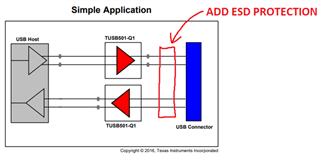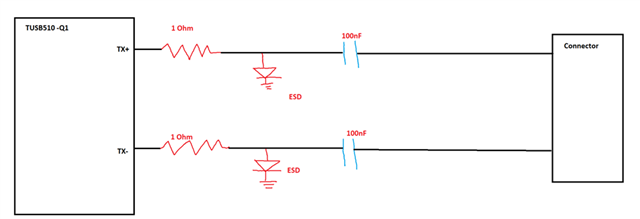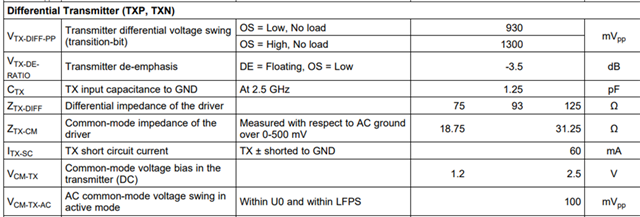Other Parts Discussed in Thread: TPD2E2U06-Q1, HD3SS3212-Q1
Hi team,
I would like to protect USB3.0 high speed bus from short to battery(<21V) fault.
If I place AC coupling capacitor in between USB connector and TUSB501-Q1 input(and output), does it protect TUSB501-Q1 from short to battery?
regards,




